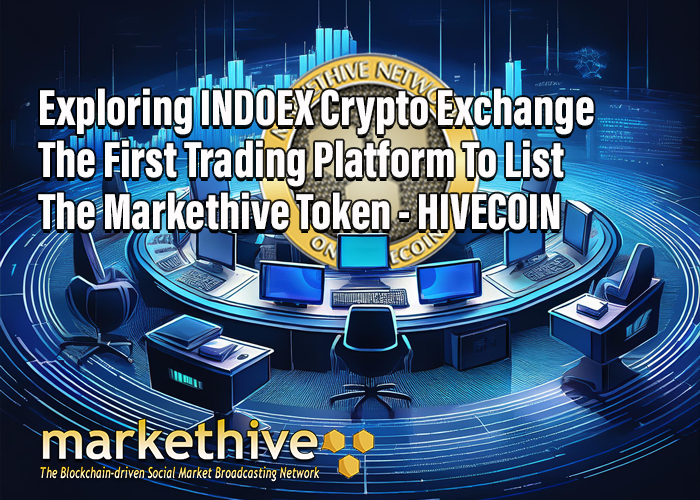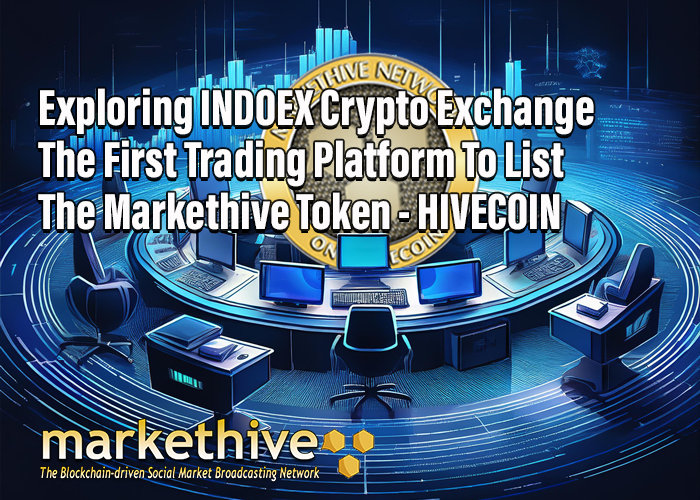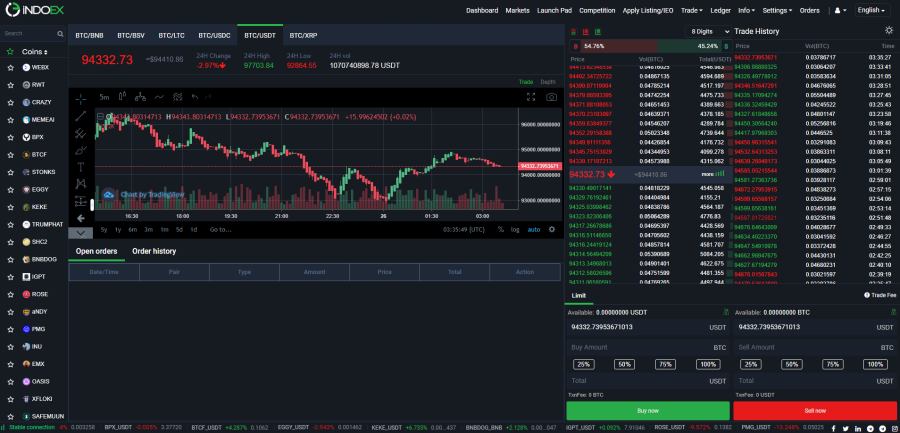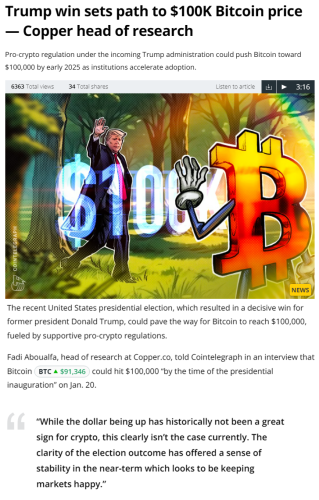The Path to Self-Improvement: Habits for Personal Growth
In today’s fast-paced world, the pursuit of self-improvement has become a transformative journey that empowers individuals to unlock their true potential and achieve remarkable personal growth. At the heart of this journey lies the cultivation of positive habits – the building blocks that propel us towards a more fulfilling and prosperous life. This article delves into the essential habits and strategies that can serve as a roadmap for those seeking to embark on the path of self-improvement.

Self-improvement is not merely a lofty aspiration; it is a practical and attainable goal that can yield tangible benefits in both personal and professional realms. By embracing the principles of self-development, individuals can cultivate a growth mindset, foster meaningful relationships, and establish healthy routines that lead to lasting change.

Through a comprehensive exploration of the key aspects of self-improvement, this article aims to empower readers with the knowledge and tools necessary to embark on their own transformative journey. From understanding the importance of setting realistic goals to cultivating a positive mindset, the insights shared within these pages will serve as a guiding light for those who are ready to take charge of their personal growth and unlock their true potential.
Key Takeaways
- Discover the transformative power of positive habits for personal growth
- Understand the importance of self-improvement and its far-reaching benefits
- Learn strategies for cultivating a growth mindset and embracing challenges
- Explore practical tips for establishing daily routines and managing time effectively
- Discover the role of education, relationships, and healthy habits in self-improvement
Understanding Self-Improvement and Its Importance
Self-improvement is the process of enhancing skills, knowledge, and qualities for greater fulfillment, productivity, and well-being. It is a journey of continuous growth, driven by a mindset focused on personal evolution and goals.
Defining Self-Improvement
At its core, self-improvement is about taking proactive steps to become the best version of oneself. It involves identifying areas for growth, setting realistic goals, and implementing strategies to overcome challenges and develop new capabilities. Whether it’s improving communication skills, cultivating a positive mindset, or establishing healthier habits, self-improvement is a multifaceted process that can lead to transformative personal and professional outcomes.
The Benefits of Personal Growth
- Increased confidence and self-esteem
- Greater sense of purpose and direction
- Improved productivity and time management
- Enhanced problem-solving and decision-making abilities
- Stronger relationships and social connections
- Better physical and mental well-being
Setting Realistic Goals
Effective self-improvement begins with setting achievable goals. By defining specific, measurable, and time-bound objectives, individuals can create a clear roadmap for personal growth and track their progress along the way. This goal-setting process helps to maintain focus, foster accountability, and celebrate small wins, ultimately leading to lasting and meaningful changes.
| Key Factors for Realistic Goal-Setting |
Example |
| Specific |
Increase weekly exercise to 3 times per week |
| Measurable |
Read 1 self-help book per month |
| Attainable |
Reduce daily screen time by 1 hour |
| Relevant |
Develop a morning meditation practice |
| Time-bound |
Improve public speaking skills within the next 6 months |
By embracing a self-improvement mindset and setting realistic goals, individuals can unlock their full potential, enhance their overall well-being, and achieve greater personal and professional success.
Cultivating a Growth Mindset
Developing a growth mindset is a crucial step in the journey of personal growth and self-improvement. This mindset, characterized by a belief in one’s ability to learn, adapt, and improve, is the foundation for embracing challenges, learning from criticism, and celebrating small wins.
Embracing Challenges
Individuals with a growth mindset view challenges as opportunities for learning and development, rather than threats to be avoided. They approach obstacles with a sense of enthusiasm and a willingness to put in the effort required to overcome them. This motivation and resilience are essential for sustained personal growth.

Learning from Criticism
Feedback, even when critical, can be a valuable tool for personal growth when approached with a growth mindset. Instead of perceiving criticism as a personal attack, those with a growth mindset see it as an opportunity to identify areas for improvement and implement constructive changes.
Celebrating Small Wins
- Recognizing and celebrating small achievements is crucial for maintaining motivation and a sense of progress.
- By acknowledging even the smallest steps forward, individuals with a growth mindset reinforce the belief that they are capable of continuous personal growth.
- This positive reinforcement fuels further efforts and helps individuals stay focused on their long-term goals.
Cultivating a growth mindset is a transformative process that empowers individuals to embrace challenges, learn from feedback, and find joy in their own personal development. This mindset is a powerful tool for unlocking one’s full potential and driving sustained personal growth.
Establishing Daily Routines
Unlocking the power of self-improvement often lies in the consistent execution of daily routines. By establishing a structured approach to our days, we can harness the productivity, habits, and focus needed to drive personal growth. In this section, we’ll explore the transformative impact of morning rituals, evening reflection practices, and strategies for maintaining consistency in your self-improvement journey.
Morning Rituals for Success
The way we start our day can set the tone for the entire 24 hours. Successful individuals often attribute their achievements to the implementation of intentional morning routines. These rituals may include activities such as meditation, journaling, exercise, or simply savoring a cup of coffee in quiet contemplation. By dedicating time to nourish the mind, body, and spirit, we prime ourselves for a productive and self-improvement-oriented day.
Evening Reflection Practices
- Take a few moments to review the day’s events, acknowledging both successes and areas for growth.
- Engage in a brief journaling exercise to capture key insights, lessons learned, and gratitude.
- Reflect on the progress made towards your personal productivity goals and adjust your plans as needed.
Strategies for Consistency
- Prioritize your daily routines and make them non-negotiable.
- Experiment with different approaches and find what works best for your unique needs and preferences.
- Celebrate small wins and recognize the compounding effect of consistent habits over time.
- Enlist the support of accountability partners or join a community of like-minded individuals to foster self-improvement habits.
| Morning Rituals |
Evening Reflection |
Consistency Strategies |
| Meditation, journaling, exercise |
Review progress, capture insights, express gratitude |
Prioritize, experiment, celebrate small wins, seek accountability |
By embracing the power of daily routines, you can unlock the door to productivity, self-improvement, and lasting personal growth. Invest in your morning and evening practices, and watch as your habits reshape your life for the better.
The Role of Education in Self-Improvement
Self-improvement is a lifelong journey, and education plays a crucial role in this process. Embracing a mindset of continuous learning can unlock new opportunities for personal growth and development.
Lifelong Learning Opportunities
The pursuit of self-improvement goes beyond formal education. Individuals can engage in various learning opportunities, such as workshops, online courses, or professional development programs, enabling the exploration of new skills and the expansion of existing knowledge.
Online Courses and Resources
The digital age has transformed access to educational content. Online courses and resources abound, serving diverse interests and skill levels. Platforms like Coursera and Udemy provide self-development courses, enabling individuals to tailor their lifelong learning and pursue their personal growth goals.
Reading for Personal Development
- Regular reading can be a powerful tool for self-improvement. By exploring books, articles, and publications that align with your interests and goals, you can gain new perspectives, acquire valuable insights, and cultivate a deeper understanding of the world around you.
- Reading can inspire you, challenge your beliefs, and provide practical strategies for overcoming obstacles. It is a versatile and accessible resource that can complement other self-development activities, contributing to a well-rounded approach to personal growth.
“The more that you read, the more things you will know. The more that you learn, the more places you’ll go.” – Dr. Seuss
By embracing the diverse opportunities for continuous learning, individuals can unlock the full potential of self-development and embark on a rewarding journey of lifelong learning and personal growth.
Building Positive Relationships
In the pursuit of self-improvement and personal growth, the relationships we cultivate play a pivotal role. Surrounding yourself with supportive people, mastering effective communication skills, and leveraging the power of networking can all contribute to your journey of self-discovery and transformation.

Surrounding Yourself with Supportive People
The company we keep can significantly influence our mindset and behaviors. It’s essential to surround yourself with individuals who encourage your growth, offer constructive feedback, and inspire you to become the best version of yourself. Identify the people in your life who align with your values and aspirations, and intentionally invest time and energy into these meaningful relationships.
Effective Communication Skills
Mastering the art of communication is a crucial aspect of building positive relationships. Develop the ability to express your thoughts and feelings clearly, actively listen to others, and navigate difficult conversations with empathy and understanding. Effective communication fosters deeper connections, resolves conflicts, and enables you to collaborate effectively with those around you.
The Power of Networking
Networking can be a powerful tool for personal growth and professional development. Seek out opportunities to connect with like-minded individuals, whether through industry events, online communities, or professional associations. These connections can provide valuable insights, open doors to new opportunities, and serve as a supportive community on your self-improvement journey.
By cultivating positive relationships, honing your communication skills, and leveraging the power of networking, you can create a strong support system that will propel your self-help and personal growth efforts forward.
Developing Healthy Habits
Achieving lasting self-improvement requires nurturing our physical well-being. By cultivating healthy habits, we can support our overall well-being and create a solid foundation for personal growth. Let’s explore the vital role of nutrition, exercise, and sleep in enhancing our mindfulness and self-improvement journey.
Nutrition and Its Role in Well-Being
The adage “you are what you eat” holds true when it comes to our well-being. Nourishing our bodies with a balanced diet rich in whole, nutrient-dense foods can have a profound impact on our energy levels, cognitive function, and overall mood. By making mindful food choices, we can fuel our bodies and minds, supporting our ability to tackle challenges and stay focused on our personal growth goals.
The Importance of Regular Exercise
Regular physical activity is essential for our health and plays a crucial role in our self-improvement journey. Exercise can improve mood, reduce stress, and enhance cognitive function, which helps maintain a positive mindset. Whether it’s a brisk walk, a yoga session, or a workout, incorporating exercise can enhance our well-being and foster personal growth.
Sleep and Mental Clarity
Often overlooked, the quality and quantity of our sleep can have a significant impact on our mindfulness and ability to engage in self-improvement. Adequate, restful sleep allows our bodies and minds to recharge, consolidate memories, and process the day’s experiences. By prioritizing sleep and developing healthy sleep habits, we can improve our cognitive function, emotional regulation, and overall mental clarity, empowering us to navigate the journey of personal growth with greater focus and resilience.
Managing Time Effectively
In the quest for self-improvement, one crucial aspect to master is the art of time management. Effective time management not only enhances productivity but also empowers individuals to achieve their personal and professional goals with greater focus and efficiency.
Prioritization Techniques
Establishing clear priorities is the foundation of effective time management. Techniques like the Eisenhower Matrix, which categorizes tasks based on urgency and importance, can help individuals identify and tackle the most pressing matters first. Additionally, the “2-Minute Rule” encourages completing quick tasks immediately, preventing them from accumulating and becoming overwhelming.
Tools for Time Management
A wide array of digital and analog tools are available to support time management efforts. Calendar apps, task management software, and productivity-enhancing browser extensions can help individuals track deadlines, schedule meetings, and minimize distractions. Investing in a physical planner or journal can also facilitate a more tangible and mindful approach to self-development.
Avoiding Procrastination
Procrastination is the nemesis of effective time management. Strategies such as the Pomodoro Technique, which encourages focused work sessions followed by brief breaks, can help individuals maintain momentum and overcome the tendency to procrastinate. Cultivating self-awareness and recognizing personal triggers for procrastination is also crucial in developing a proactive approach to task completion.
| Prioritization Technique |
Description |
| Eisenhower Matrix |
Categorizes tasks based on urgency and importance to help individuals focus on high-priority items. |
| 2-Minute Rule |
Encourages the immediate completion of tasks that can be done in 2 minutes or less, preventing them from accumulating. |
| Pomodoro Technique |
Alternates focused work sessions with short breaks to maintain productivity and avoid burnout. |
“Time is the most valuable asset we have, and we must learn to manage it with ruthless efficiency if we want to achieve our goals.” – Brian Tracy
Dealing with Setbacks and Failure
In the pursuit of self-improvement and personal growth, facing setbacks and failures is inevitable. However, it’s how we respond to these challenges that truly determines our success. By cultivating resilience and developing effective strategies for recovery, we can turn our most daunting obstacles into opportunities for growth.
Learning Resilience
Resilience is the ability to bounce back from adversity and learn from our mistakes. It involves fostering a positive mindset, embracing a growth-oriented approach, and developing healthy coping mechanisms. To build resilience, try the following:
- Practice self-compassion and avoid harsh self-criticism.
- Identify and challenge negative thought patterns that limit your potential.
- Surround yourself with a supportive network of family, friends, and mentors.
- Engage in regular self-care activities to manage stress and maintain emotional well-being.
Strategies for Recovery
When faced with setbacks or failures, it’s essential to have a plan in place to facilitate a swift and effective recovery. This might involve breaking down the problem, seeking out new strategies, and gradually rebuilding your confidence and momentum.
- Reflect on the lessons learned from the experience.
- Identify the specific obstacles that contributed to the setback.
- Develop a detailed action plan to address the issues and move forward.
- Celebrate small wins along the way to reinforce your progress.
Finding Motivation After Failure
Maintaining motivation in the face of failure can be a true challenge, but it is crucial for long-term personal growth and self-help. By focusing on your intrinsic desires, practicing gratitude, and embracing the opportunity for improvement, you can reignite your passion and determination.
“Failure is simply the opportunity to begin again, this time more intelligently.” – Henry Ford
Remember, setbacks and failures are not permanent roadblocks, but rather opportunities to enhance your motivation and refine your approach. By cultivating resilience, strategizing for recovery, and continuously seeking motivation, you can navigate the path to self-improvement with greater confidence and success.
Tracking Your Progress
Monitoring your progress is essential for maintaining motivation and ensuring consistent self-improvement. By regularly reflecting on your journey, you can celebrate your achievements, identify areas for growth, and make informed decisions about your future goals.
Journaling for Self-Reflection
Keeping a journal can be a powerful tool for self-reflection. Through the act of writing, you can gain deeper insights into your thoughts, emotions, and experiences. Journaling allows you to track your personal growth, explore your challenges, and document your progress over time.
Setting Milestones
Establishing meaningful milestones along your self-improvement path can help you stay focused and motivated. Break down your larger goals into smaller, actionable steps, and celebrate the accomplishment of each milestone. This approach can provide a sense of progress and encourage you to continue pushing forward.
Celebrating Achievements
It’s important to take the time to acknowledge and celebrate your achievements, no matter how small they may seem. Recognizing your progress can boost your self-confidence, reinforce positive habits, and inspire you to continue your self-improvement journey. Treat yourself with compassion and enjoy the fruits of your hard work.
FAQ
What is self-improvement, and why is it important?
Self-improvement refers to the process of enhancing one’s personal and professional capabilities, mindset, and overall well-being. It’s important because it can lead to increased confidence, productivity, and life satisfaction, helping you become the best version of yourself.
How can I develop a growth mindset?
Cultivating a growth mindset involves embracing challenges, learning from criticism, and celebrating small wins. By approaching obstacles with a mindset of learning and improvement, you can foster continuous personal growth and development.
What are some effective daily routines for self-improvement?
Establishing daily routines, such as morning rituals and evening reflection practices, can help foster self-improvement. Strategies like setting achievable goals, maintaining consistency, and finding ways to stay motivated can all contribute to your personal growth journey.
How can education and learning opportunities support self-improvement?
Lifelong learning, whether through online courses, reading, or other educational resources, can be a powerful tool for self-improvement. Continuously expanding your knowledge and skills can lead to personal and professional development, helping you reach new heights.
What is the role of relationships in self-improvement?
Surrounding yourself with supportive and positive people, developing effective communication skills, and leveraging networking opportunities can all contribute to your self-improvement journey. Building strong relationships can provide the encouragement, feedback, and resources you need to grow and thrive.
How can physical health impact self-improvement?
Adopting healthy habits, such as proper nutrition, regular exercise, and ensuring quality sleep, can have a significant impact on your overall well-being and ability to focus on self-improvement. Maintaining physical health can enhance mental clarity, boost energy levels, and support your personal growth efforts.
What strategies can I use to manage my time effectively for self-improvement?
Effective time management is crucial for self-improvement. Techniques like prioritization, using productivity tools, and overcoming procrastination can help you make the most of your time and ensure you are consistently working towards your personal growth goals.
How can I deal with setbacks and failures during my self-improvement journey?
Setbacks and failures are a natural part of the self-improvement process. Developing resilience, finding strategies for recovery, and maintaining motivation in the face of challenges can help you navigate these obstacles and continue progressing towards your goals.
How can I track my progress and celebrate my achievements?
Regularly reflecting on your journey through journaling, setting milestones, and acknowledging your accomplishments can help you stay motivated and celebrate your personal growth. Tracking your progress and recognizing your achievements can provide a sense of accomplishment and drive you to continue improving.
Tim Moseley


.png)
.png)


.png)



















.png)








